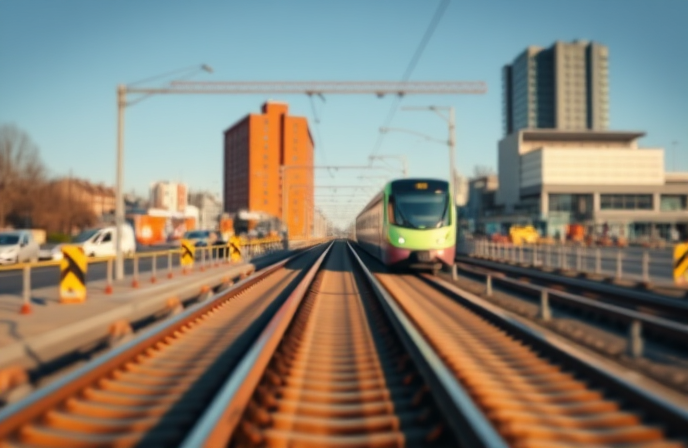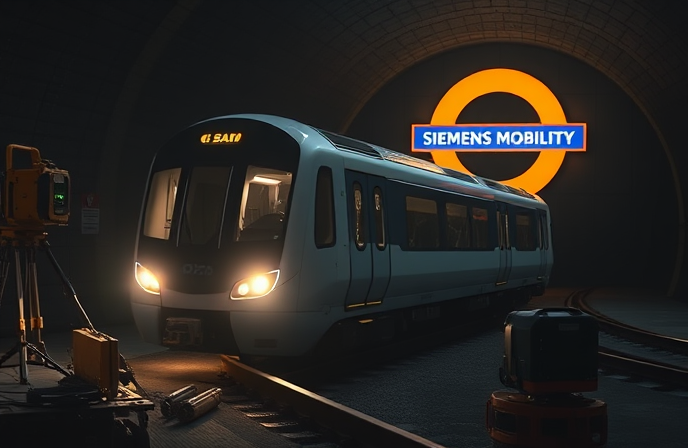Indian Railways: Future-Proofing Through Swiss Rail Innovations
Indian Railways: Unlocking efficiency and safety through international collaboration, particularly with Switzerland. Discover how!

Optimizing Indian Railways: A Look at Potential Improvements Through International Collaboration
Indian Railways, a vital artery of the nation’s economy, faces numerous challenges in maintaining efficiency and safety while catering to an ever-increasing passenger and freight demand. This article explores potential avenues for improvement, examining the critical aspects of infrastructure development, operational efficiency, and technological advancements. A key focus will be on leveraging international partnerships, particularly with nations like Switzerland, renowned for its advanced rail systems, to accelerate modernization and enhance passenger experience. This analysis will delve into specific areas of expertise, such as high-speed rail technology, signaling systems, and maintenance strategies. Ultimately, the objective is to not only enhance the existing rail network but to create a more sustainable, reliable, and technologically advanced transportation system that caters to the nation’s present and future needs. This paper argues that adopting best practices from other developed rail systems, paired with strategic investments in technology and infrastructure, is paramount for Indian Railways to thrive in the coming years.
Infrastructure Enhancement: Bridging the Gap
A crucial element in improving Indian Railways is enhancing infrastructure. This involves addressing issues such as track maintenance, bridge safety, and station upgrades. Outdated infrastructure often leads to delays, safety concerns, and decreased passenger comfort. International collaborations, particularly with countries like Switzerland, could provide invaluable technical expertise and access to innovative solutions. Swiss expertise in high-speed rail construction, including tunnel engineering and advanced track materials, could offer significant advancements. This could involve joint research projects to improve the resilience of Indian rail infrastructure to extreme weather conditions and other challenges specific to the region.
Operational Efficiency: Streamlining Processes
Streamlining operations is essential for improving the overall efficiency of Indian Railways. This includes optimizing train scheduling, enhancing dispatching systems, and improving cargo handling procedures. Adopting advanced technologies, like those used in European systems, can enhance safety and precision. Such technologies include advanced signaling systems, dynamic train control, and integrated dispatch systems. By analyzing and implementing best practices from other high-performing rail networks, Indian Railways can drastically reduce delays, improve punctuality, and overall increase the network’s efficiency. Integration with real-time data management systems, using technology and software solutions, would also enhance passenger information and reduce stress during journeys.
Technological Advancements: Embracing Innovation
Embracing technological advancements is paramount for improving Indian Railways’ performance. This could involve introducing modern ticketing systems, real-time passenger information displays, and automated maintenance processes. The integration of IoT (Internet of Things) technology and AI (Artificial Intelligence) can also revolutionize several aspects of rail management, from predictive maintenance to optimized resource allocation. Moreover, advanced communication systems, incorporating new wireless technologies, will further strengthen the infrastructure and enable efficient communication between control centers, engineers, and trains.
Indian-Swiss Rail Collaboration: A Potential Partnership
Recognizing Switzerland’s reputation for excellence in high-speed rail, efficient signaling systems, and innovative safety measures, exploring a formal collaboration between Indian and Swiss railway authorities could yield remarkable benefits. This could range from training programs for Indian railway staff on Swiss technologies to joint ventures for infrastructure projects and even the implementation of Swiss-designed high-speed rail lines. By studying the Swiss model, Indian Railways can gain critical insights into aspects like efficient route planning and comprehensive safety protocols. This collaboration would not only bring about technological advancement but also contribute to a more sustainable transportation system in India.
Conclusion
The Indian Railway system faces significant challenges to ensure efficiency, safety, and a consistent passenger experience. This article has highlighted the need for a multifaceted approach to optimizing the system. Improving infrastructure through advanced technologies and construction methods is crucial. Optimizing operational efficiency through streamlined processes and innovative scheduling is critical. Leveraging technology, such as IoT and AI, for predictive maintenance and passenger experience enhancement, is another key aspect to consider. Finally, leveraging existing international expertise through collaboration, particularly with Swiss railways, offers a valuable opportunity for learning best practices and implementing cutting-edge technologies.
By embracing these strategies, India’s railway network can be transformed into a truly modern, efficient, and safe system. This will contribute significantly to the nation’s economic growth and the lives of its citizens. The potential benefits of such a collaboration between India and Switzerland are vast and could provide a template for other developing nations seeking to modernize their rail infrastructure. This kind of partnership can ensure the future success and sustainability of the Indian Railways.
This analysis underscores the importance of recognizing the specific challenges faced by Indian Railways and how international collaboration, particularly with countries like Switzerland, can provide essential insights and technical support to optimize the system and further improve its global competitiveness.
You might be interested in:





